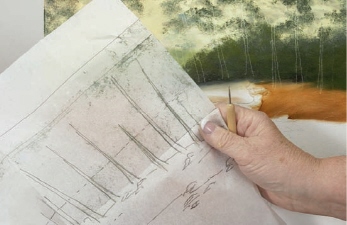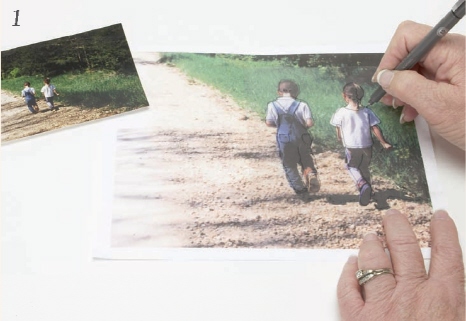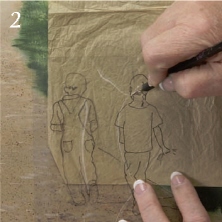
TRANSFERRING A PATTERN
It is best to copy your pattern onto a piece of tracing paper the size of the canvas. You may use a pencil or felt pen to trace the pattern. Lay the tracing on top of the canvas and slip a piece of white or gray transfer paper between the tracing and the canvas. Check to be sure you have the graphite side facing the canvas. Use a stylus over the tracing, transferring the design to the canvas. Before removing the tracing, check to be sure you have the entire pattern on the canvas.
When painting with acrylics, I like to complete the background and then add the detail or outline of people, animals, small buildings and other subjects. Lay the tracing over the painted canvas and slip your transfer paper between the tracing and the dry canvas and reapply the pattern.

Etching Pattern Lines on Wet Oil. Sometimes it’s more helpful to trace a portion of the pattern onto the canvas after you’ve painted the background, but oils take a while to dry. To transfer the pattern while the canvas is wet, simply lay the pattern over the canvas and etch the desired pattern lines into the wet paint with a stylus, as shown here.
RESIZE AN ELEMENT

Step 1: Use copier to enlarge image. Sometimes you have an element in one photo that you want to add to your composition, but the size is too big or too small. Use a photocopier to bring the original to the right size. Place clear acetate over the resized photo and trace the element you desire.

Step 2: Trace image from acetate. Your acetate tracing becomes a pattern you can use to place the desired element into your composition.